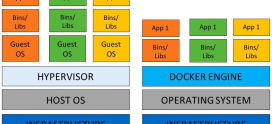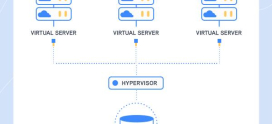
How Edge Data Centers Are Greening the Cloud
Have you ever stopped to think about the environmental impact of the cloud? As we increasingly rely on this invisible technology for everything from streaming movies to working remotely, concerns about energy consumption and carbon footprints are rising. It can feel overwhelming; each time we upload a photo or send an email, we might wonder: what’s happening behind the scenes? Are we contributing to a larger problem? You are not alone in having these thoughts.
The good news is that technology is evolving, and innovative solutions are paving the way for a more sustainable future. Enter edge data centers—smaller, more localized facilities that are transforming the way we think about the cloud. In this article, we’ll explore just how these data centers are greening the cloud, giving you practical insights that hopefully ease some of your environmental concerns. So, let’s dive in!
Understanding Edge Data Centers
Edge data centers are a modern twist on traditional data centers. While a conventional data center may be a massive, centralized facility, an edge data center is smaller and located closer to the end user. Imagine a local coffee shop that serves fewer people but provides a personalized experience, versus a sprawling chain store that may not meet everyone’s needs as effectively. This localization minimizes latency, enhancing performance while also offering an eco-friendly advantage.
How Do Edge Data Centers Work?
Edge data centers bring processing power closer to users by placing servers nearer to where data is generated and consumed. For example, instead of data being transmitted across long distances to a central facility, it can be processed locally. This results in faster response times and lower energy consumption. Think of it as reducing the number of cars on the highway by building more efficient side roads; it’s easier for everyone when the traffic is managed better.
Energy Efficiency: The Heart of Sustainability
One of the key advantages of edge data centers is their energy efficiency. Traditional data centers consume vast amounts of power not just for computing but also for cooling. Edge data centers, on the other hand, can be designed to use less energy in their operations. This is achieved through various innovative techniques and technologies.
Renewable Energy Sources
Many new edge data centers are now being built with renewable energy sources in mind. Solar panels, wind turbines, and geothermal heating are becoming common sights. By tapping into renewable sources, these facilities are significantly reducing their carbon emissions. It’s like opting for a bicycle ride instead of driving a car; the result is far less pollution and a healthier planet.
Location Matters: Reducing Transmission Losses
The geographical placement of edge data centers is crucial. By situating these facilities closer to urban areas, data transmission times are reduced, which in turn decreases energy consumption and carbon emissions. Less distance means lower transmission losses, akin to making a quick run to the local grocery store instead of driving to one far away—less fuel burned equals more eco-friendliness.
Local Community Engagement
Edge data centers often engage with local communities to ensure their branches are serving the population efficiently. They aim to provide not just tech solutions but also contribute to local sustainability efforts, enhancing community relations and further embedding green practices into their operations.
Cooling Systems: A Greener Solution
Cooling is a significant concern in data center operations. Traditional methods often rely on extensive air conditioning, consuming unnecessary energy. Edge data centers utilize innovative cooling methods such as liquid cooling and free air cooling systems. These newer technologies can greatly reduce energy waste, further solidifying the role of edge data centers in promoting sustainability.
Smart Technologies
Several edge data centers employ smart technology to optimize energy consumption actively. For instance, AI can analyze workloads in real-time to adjust power usage accordingly. This is similar to how your thermostat learns your habits; it efficiently manages energy use based on what you need, when you need it.
Security and Data Privacy: A Sustainable Choice
While many people focus on the environmental impact of data centers, security remains a top priority. Edge data centers play an essential role in this aspect as well. By processing data closer to the source, they can minimize risks associated with data breaches. This localized approach creates a more secure environment while also enhancing energy efficiency. It’s a win-win scenario for both security and sustainability.
Customer Support and Accessibility
With edge data centers, customer support also benefits from improved accessibility. Localized facilities can often respond more quickly to issues and provide tailored solutions for nearby clients. Just like having a knowledgeable neighbor to help you with a home project, edge data centers offer that localized expertise that more centralized ones cannot match.
Challenges Facing Edge Data Centers
Despite the clear advantages, edge data centers do face some challenges. Infrastructure investment, regulatory requirements, and maintaining consistent energy sources are a few hurdles that operators must navigate. However, the push towards greener technology suggests that these obstacles can be overcome with continued innovation and commitment to sustainability.
The Future of Data Centers
As we look to the future, the movement towards green technology will likely continue to reshape the data center landscape. Edge data centers seem poised to lead the charge and reimagine how we improve our cloud services while mitigating environmental impact. Like moving from a gas-guzzling vehicle to an electric one, these data centers represent a significant step towards greener operations.
FAQs
What is an edge data center?
An edge data center is a smaller facility located closer to the end users, allowing for faster processing times and reduced latency compared to traditional, centralized data centers.
How do edge data centers help the environment?
Edge data centers help the environment by being energy-efficient, utilizing renewable energy sources, and reducing transmission losses through their strategic location.
What are the advantages of using renewable energy sources in edge data centers?
Using renewable energy sources reduces carbon emissions and reliance on fossil fuels, promoting sustainability while also often lowering energy costs in the long run.
Can edge data centers improve security?
Yes! By processing data closer to its source, edge data centers can enhance security and reduce the risks associated with data breaches.
How do cooling systems affect energy efficiency in data centers?
Efficient cooling systems, such as liquid cooling or free air cooling, significantly reduce energy consumption needed to maintain optimal temperatures in data centers.
Are edge data centers suitable for all types of businesses?
Edge data centers can benefit a wide range of businesses, especially those needing quick data processing and lower latency, but the specific needs should be evaluated to determine suitability.
What types of technologies are being implemented in edge data centers?
Technologies such as AI for workload optimization, advanced cooling systems, and renewable energy solutions are being increasingly implemented in edge data centers to enhance their performance and sustainability.
What challenges do edge data centers face?
Edge data centers face challenges such as infrastructure investment, regulatory hurdles, and ensuring consistent energy supply, but these challenges can often be overcome with strategic planning and innovation.
What is the future outlook for edge data centers?
The future outlook for edge data centers is positive, as they are expected to be significant players in the ongoing push toward greener technologies and more efficient cloud services, helping organizations meet both performance and sustainability goals.
Conclusion
As we navigate the digital age, understanding the environmental impact of our technology choices becomes increasingly vital. Edge data centers represent a promising advancement in how we can enjoy the benefits of the cloud while prioritizing sustainability. By utilizing renewable energy, optimizing cooling systems, and engaging with local communities, these facilities are not just contributing to a greener future but also reimagining what efficient cloud services can look like. As technology continues to evolve, so too will our approach to fostering a healthier planet.









